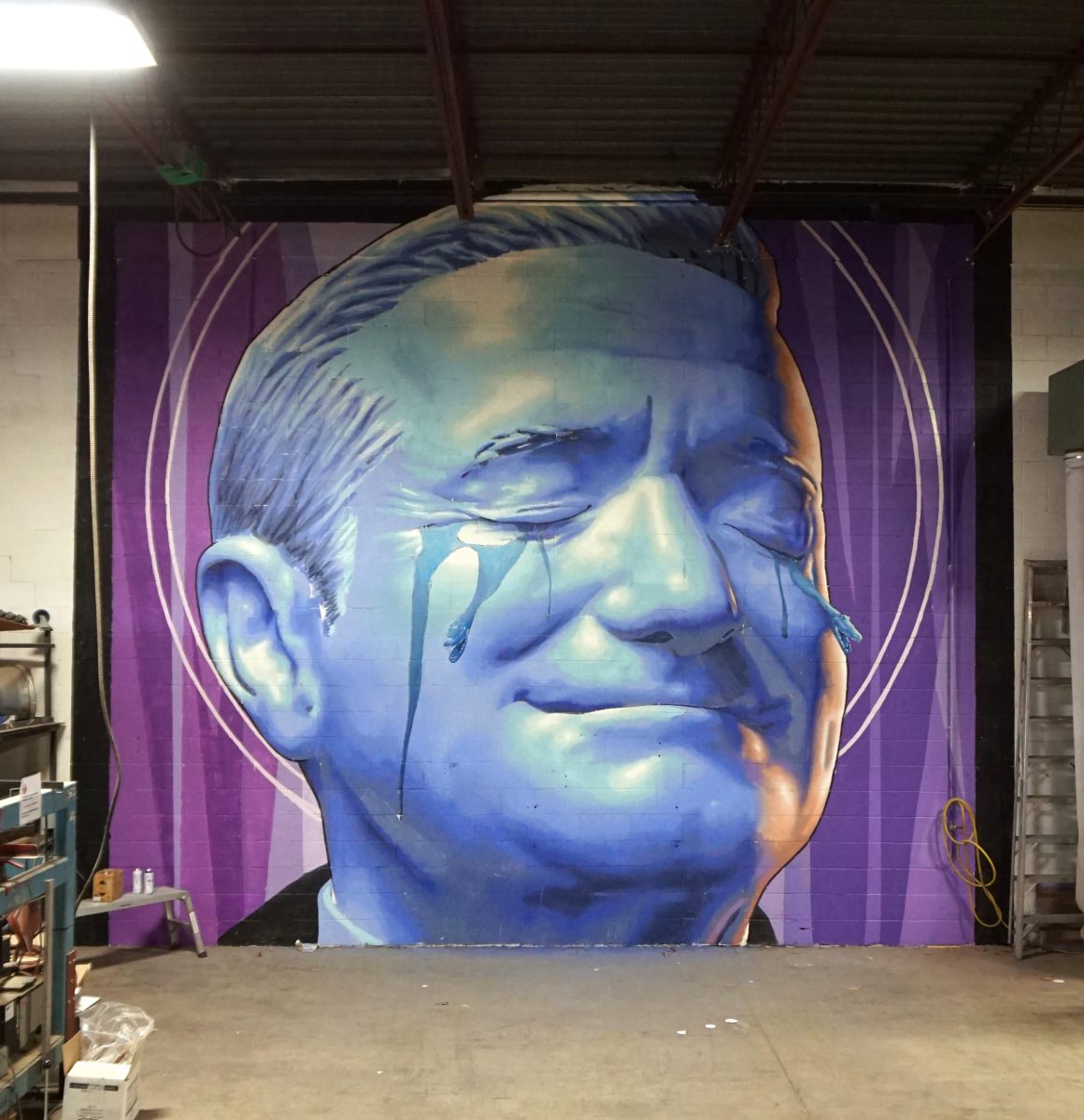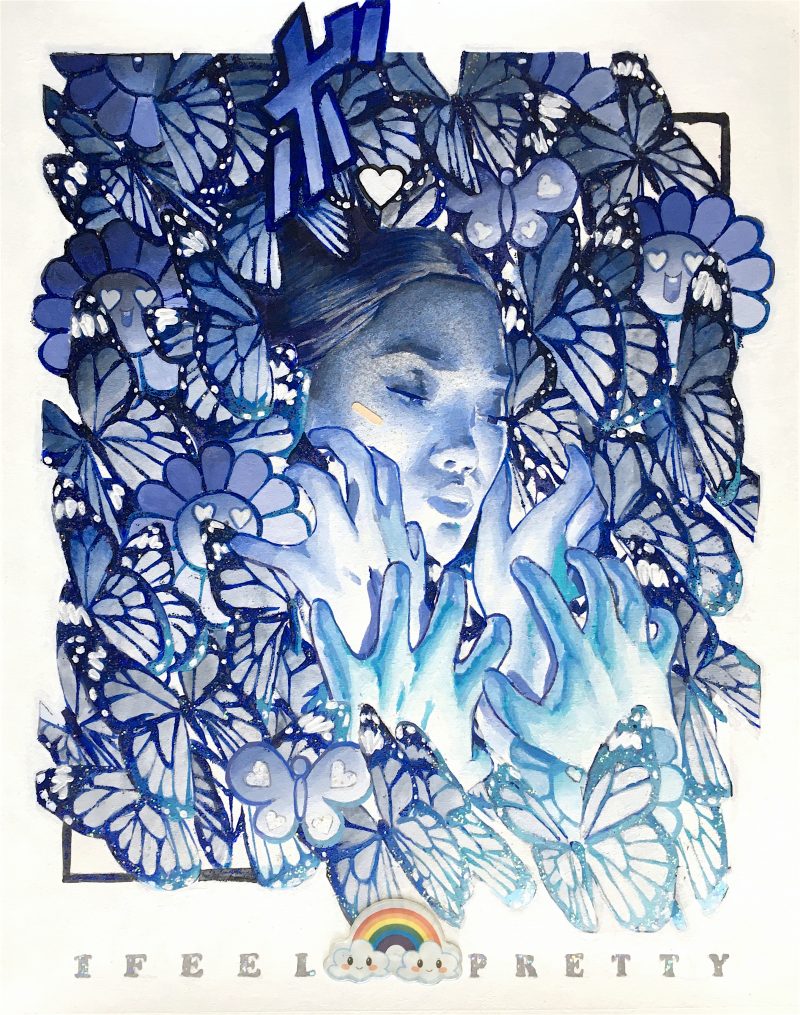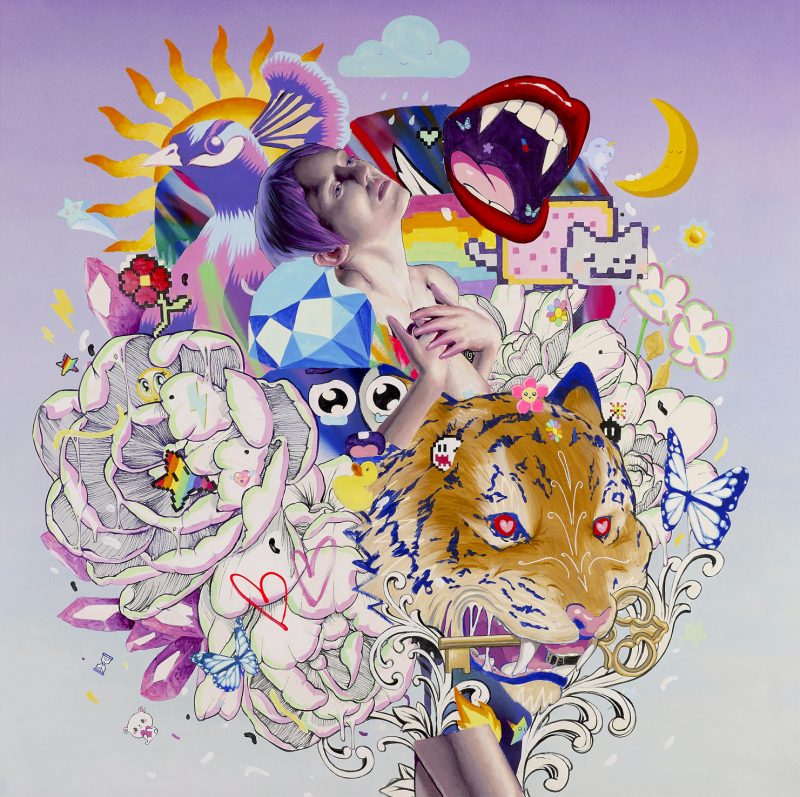
Nicolas Craig, Canadian artist born in 1990, originally from Montreal (Canada) and graduated from UQAM in Visual Art.
Nicolas Craig began with the practice of graffiti during his adolescence, driven by the love of danger and self-transcendence that he had acquired in the practice of several extreme sports. At 30, he calmed down and fell into the world of more traditional arts, a passion he developed by studying many artists of his time such as Takashi Murakami, Andy Warhol and Banksy.

The most important materials in Nicolas Craig’s work are acrylic and spray paint. On the side of the prints, it is simply a question of recovered office tools with which he will use the ink with an already determined word.
Pain in the shoulders and difficulty raising his arms, the gestures he uses to paint trace the marks of his anxiety.

His social anxiety is reflected in the intensity of the cynicism of his paintings.
The print gives a solid base because it is the foundation of the work, but the painting no longer becomes the foundation of the work with Nicolas Craig, it becomes the image that is created. According to him, the technique is to take pleasure in creating. He seems to have found a base, a balance between what he does and doing it.
Stickers are also part of the materials with which he creates his canvases, sometimes small plastic diamonds, vintage frames found in flea markets.
There are recipes, he reveals to us, both in the colors and in the shapes he uses to draw the bodies. Artist particularly animated by the idea of playing with light and the 3D curves provided by the many hollows and spaces of the corporality . In its early days, the bodies were not represented with the presence of gazes, the figures simply had their eyes closed. Then now, the eyes gradually begin to open.
It is realism that inspires him in the forms and use of the body he makes in his work. In his research, he is also interested in the forms that the body takes and the meaning that he will give to the situation of the latter. To do this, you have to ask yourself about the right contrasts or staging of the bodies.

Some examples of interpretations of paintings by Nicolas Crai g
Idol Of Perversity
The Popeye is the emblem of masculinity, which is surrounded by female bodies. Placed around the character to account for perversity: he is the archetype of man. In the Western collective imagination, the female body is mostly represented without hair. In short, this canvas is the subject of a critique of the hidden perversion found in our societies. She points the finger at the animality that can emerge from man. Popeye is the archetype of “the strong man who will project his wife”. Through the multiplicity of female presences and the uniqueness of the male body, the work reveals to us the phantasmagoric universe present in the male psyche. Then, the meaning given to the title makes it possible to grasp the last key to understanding. In a way, the agency of the title comes to reinforce the critical dimension that the work gives to grasp.

Prints:
Double look subject, object.
Newcomer
The prints in general refer to a fairly important social symbolism in his work. They make it possible to criticize mores, the critical view of common sense illustrated through technique.
It is also linked to the materiality of the work, you invite the spectator to break with the distance that his gaze bears on the work, in a certain way it invites him to dig with his eye, the sense of detail and the materiality. We are not satisfied only with the image, but with the plural dimension at the same time social, political, technical material that it gives to see. Regardless of the subject, the work invites us to physically approach the theme. “creating closeness”.
“these forgotten people will be rehoused in spaces giving a secondary meaning, both to the canvas and to the story of the subject” < EXAMPLE = the immigrant in the living room of the bourgeois.
Choice of colors: red blue or black.
passive soft blue / red: vibrating active / black: neutral, sometimes obscure
Then, in the technique, Nicolas Craig uses a bit the same technique as the tattoos, a color that is gradually amplified: at the same time it is also the idea of no return. The impossibility to go back also gives a taste to the work of irreparable and permanent unlike painting.






